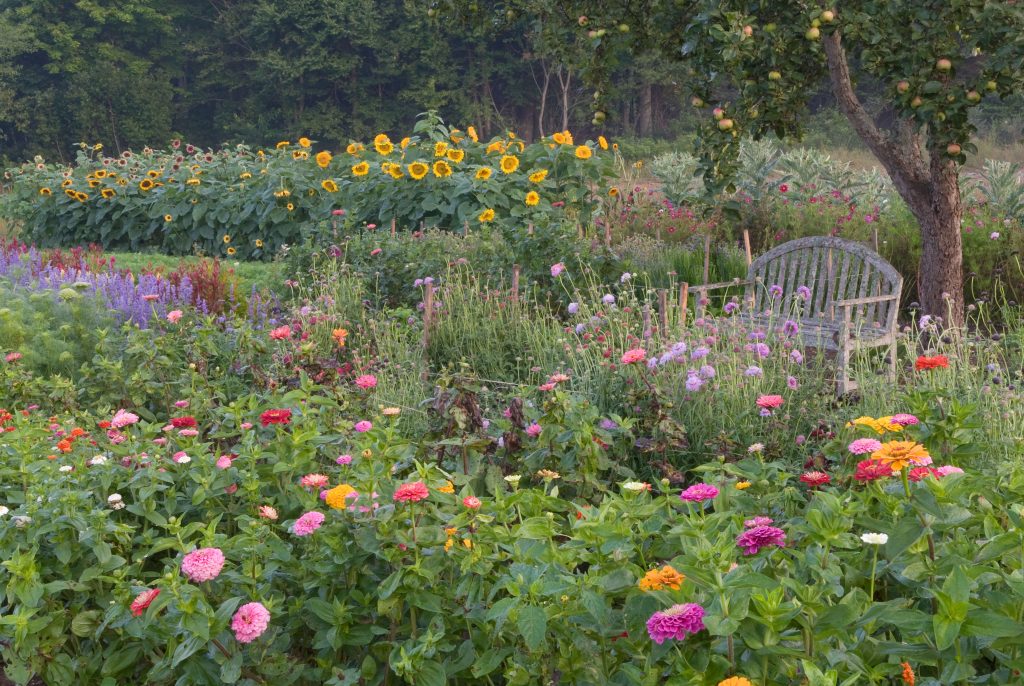:max_bytes(150000):strip_icc():format(jpeg)/101127789_preview-2304ff61352d495e81c663f1d814e0ba.jpg)
Unlike perennial flowers, annuals bloom for a single season and die away when the weather turns cold. However, that doesn’t mean that you need to buy seeds for annual flowers every year. If you select the right annuals for your garden, you may be able to collect and save their seeds for next year.
From colorful poppies to easy-care sunflowers, here are 9 of the best annuals to grow for seed saving, plus seed collection tips to help you preserve your favorite flowers for years to come.
Heirloom vs. Hybrid Seeds: What’s the Difference?
Not all flower seeds are worth the effort of saving them. Choose heirloom or open-pollinated annuals because they are “true to type”—the seeds they produce grow into plants that look identical to the parent plant. Hybrid plants, on the other hand, produce unpredictable results and often grow into flowers that don’t look anything like the parent plant. If you are unsure if your annual flowers are open-pollinated or hybrid, check the seed catalog or search the variety name online.
Sunflowers
Bob Stefko
Sunflowers are some of the easiest annuals to grow, and they’re great for seed saving too. Just let the flowers and seeds dry on the plant until the petals fall off and the back of the sunflower head turns brown. Then, rub the seeds off the flower head and into a paper bag, or clip the entire flower head off the plant and hang it up to dry indoors until the seeds are easily loosened with your fingers.
Look for heirloom sunflower varieties, such as ‘Lemon Queen’ or ‘Mammoth Grey Stripe.’ You may also want to keep the flower heads covered with a paper bag if birds are trying to eat the seeds before you harvest them.
Zinnias
Bob Stefko
Fast-growing zinnias are the darlings of flower gardens, and they make useful companion plants in veggie beds and containers too. Select open-pollinated types of zinnias such as the popular ‘California Giant’ or the ‘Queenie’ series.
Once your zinnia flowers turn dry and brown, harvest their seeds by clipping the flower heads off the plant and into a perforated paper bag. Then, let the flowers dry indoors for a week or two, rub the fully dried flowers roughly to separate the seeds, discard the remaining flower debris, and store the seeds in labeled paper envelopes until spring planting time arrives.
Cosmos
Carson Downing
Cosmos seeds are harvested much like zinnias. Many varieties are hybrids, so make sure you select an open-pollinated type such as ‘Sensation’ or the bicolored ‘Picotee’. Pick cosmos flowers when they start to dry out and turn brown, let them fully dry in a perforated paper bag indoors, then rub the flower heads to separate the seeds that you want to save.
Avoid collecting seeds from plants that are affected by powdery mildew and other diseases, which may survive on seed coats and reinfect plants when you sow seeds in spring.
Marigolds
Doug Hetherington
Another garden mainstay, marigolds bloom from early summer through fall, and they’re cherished as ornamentals as well as pest-repelling companion plants. There are plenty of open-pollinated varieties of French marigolds (Tagetes patula), but open-pollinated African marigolds (Tagetes erecta) are also available.
After marigold flowers dry out, clip the flower heads off, pull the dried petals free, and separate the slender marigold seeds for saving. As with other plant seeds, label and date the seeds to keep track of their age, and store them in sturdy, airtight containers to keep moisture and pests out.
Nasturtiums
Blaine Moats
Most nasturtiums are open-pollinated, so you can trust that the seeds you are collecting produce the same flowers as the plants they come from. Compared to other annuals, nasturtium seeds are large, which makes it very easy to collect them. Nasturtium flowers drop their petals from late summer to early fall, and each flower turns into 2 to 4 seeds.
Collect the seeds when they are plump and tan in color. Fully ripe nasturtium seeds should be easy to dislodge from the plant. You can even gather them from the soil surface if they’ve already dropped to the ground.
Calendula
Andy Lyons
Calendula makes great cut flowers, but if you leave some flowers on the plant, the seeds are easy to collect. There are hybrid and open-pollinated varieties such as the popular ‘Flashback’ and ‘Pacific Beauty’, usually sold as color mixes.
Once the growing season winds down, collect your calendula seeds after allowing the flowers to dry until the petals fall away and the flowers fold in on themselves. For storage, pinch the flower heads off the plants and gently rub them to dislodge the seeds.
Annual Poppies
Brie Williams
Some poppies, including oriental poppies, are perennials, but annual types like the Flanders poppy won’t return in spring unless you collect the seeds or allow your plants to self-sow. Most varieties, including the old-time favorite ‘Shirley’ varieties with semi-double blooms, are open-pollinated. And even though the seeds are tiny, they’re still easy to collect.
Wait until the petals of your plants fall off and gather the distinctly shaped poppy pods when they’re dry. Store them as-is, and when planting, gently rattle the pods over prepared soil.
Snapdragons
Evgeniya Vlasova
Snapdragon seeds look somewhat like poppy seeds in size and color, but they come encased in quirky, rounded seed pods that are said to resemble tiny “fairy” skulls. Make sure that you have an open-pollinated variety such as ‘Cherry Twist’. Harvest seeds from the plants that were the most vigorous and prolifically blooming to ensure next year’s plants flower bountifully.
Once the pods are dried and brown, you can shake them directly into an envelope, or pick the whole pods and crack them open with your fingernails to access the seeds inside.
Morning Glories and Moonflowers
Matthew Benson
Morning glories, and closely related moonflower vines, reliably produce seeds that can be saved for future planting. Just check beforehand whether you are growing an open-pollinated variety such as ‘Grandpa Otts’ or ‘Clarke’s Heavenly Blue’.
After the spent flowers fall off the vine, collect the dried, rounded seed pods. Let the pods dry indoors for a few days, then crack them open to gather the small, dark seeds inside. If the seeds feel brittle and are not easily bent between your fingers, they have dried enough for storing.

